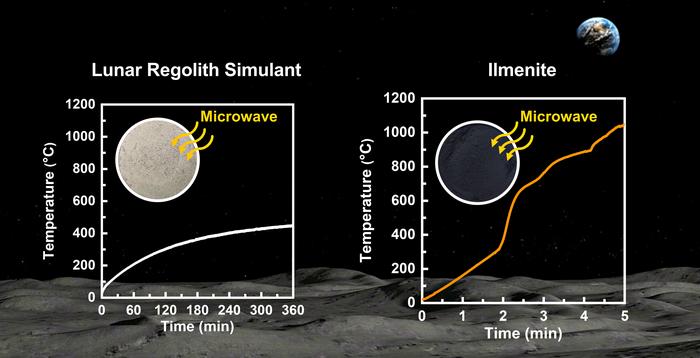The United States’ NASA aims to construct a lunar base through the Artemis program, a manned lunar exploration initiative. However, the practical reality of what general public envision for the space base differs somewhat from well-known science fiction movies. To build a base on the Moon using abundant and diverse construction materials, significant transportation costs are involved. All these materials must be launched from Earth using rockets.

Credit: Korea Institute of Civil Engineering and Building Technology(KICT)
The United States’ NASA aims to construct a lunar base through the Artemis program, a manned lunar exploration initiative. However, the practical reality of what general public envision for the space base differs somewhat from well-known science fiction movies. To build a base on the Moon using abundant and diverse construction materials, significant transportation costs are involved. All these materials must be launched from Earth using rockets.
Because transporting construction materials from Earth to the Moon is costly and time-consuming, local materials must be utilized in order to establish a lunar base. One promising method for lunar base construction using local materials is microwave sintering, which solidifies lunar regolith (soil) below its melting point. Research on sintering lunar soil using lasers, solar energy, and microwaves is actively underway worldwide. Among these techniques, microwave sintering is a notable technology being developed by various institutions, including NASA, ESA (European Space Agency), and the Korea Institute of Civil Engineering and Building Technology (KICT, President Kim Byung-suk).
The research team(Dr. Jangguen, Lee, Dr. Young-Jae, Kim, Dr. Hyunwoo, Jin) led by Dr. Hyu-Soung, Shin at the Future & Smart Construction Research Division of the KICT is currently conducting a study on microwave-sintered lunar regolith simulant bricks. This research applies sintering techniques similar to firing ceramics, raising the temperature to create solid bricks. The bricks made from lunar regolith simulant have a strength of over 20 MPa, which is comparable to concrete. Microwave heating depends on the dielectric properties of the material, so a detailed study of the dielectric characteristics of lunar regolith is necessary. Currently, there is insufficient research on how lunar regolith interacts with microwave heating at varying temperatures.
As part of microwave sintering research, the research team investigated the dielectric properties of Korean Lunar Simulant (KLS-1) and ilmenite (iron titanate) at different temperatures. Ilmenite is a mineral abundant on the lunar surface and is known to enhance the efficiency of microwave heating. However, detailed studies on the dielectric properties of ilmenite and its behavior during microwave heating have not been conducted.
The research findings indicate that lunar regolith simulant has the microwave transparent property; making it challenging to heat. However, ilmenite (iron titanate) interacts strongly with microwaves due to its unique crystal structure, allowing rapid heating to high temperatures. Additionally, the analysis of the crystal structures of lunar regolith simulant and ilmenite successfully revealed key factors contributing to the increase in mineral-microwave interactions.
Utilizing a local resource, ilmenite, as a heating element in lunar base construction by using microwave sintering means efficient and rapid production of construction materials. Dr. Young-Jae, Kim from the KICT expressed that this research is expected to be a crucial foundation for the development of microwave technology for future lunar exploration and lunar base construction.
###
The Korea Institute of Civil Engineering and Building Technology, a government-funded research institute with 41 years of extensive research experience, is at the forefront of solving national issues that are directly related to the quality of the people’s life.
This study was conducted under the KICT Research Program (project no. 20230081-001, Development of environmental simulator and advanced construction technologies over TRL6 in extreme conditions; project no. 20230144-001, Space Architecture: Development of Core Technology for the Construction of Lunar Habitation) funded by the Ministry of Science and ICT.
Journal
Construction and Building Materials
Article Title
Construction and Building Materials
Article Publication Date
14-Jun-2024



